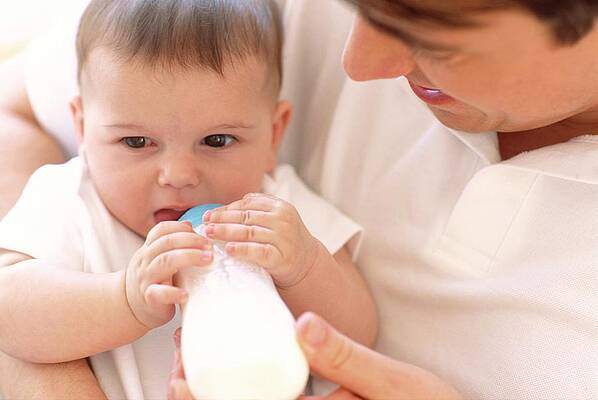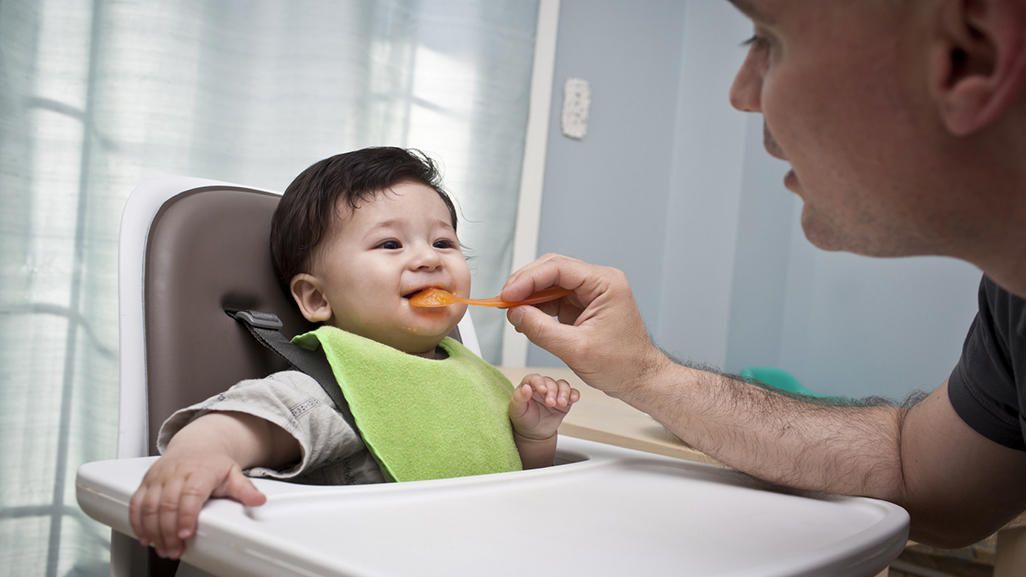Breast feeding tips for premature babies
Breastfeeding your premature baby - NHS
Your breast milk is important to your baby at any age. Giving your premature baby your breast milk benefits their health as well as yours.
Breast milk:
- helps protect your baby from infections, particularly of their gut – premature babies are more likely to get infections
- contains hormones, nutrients and growth factors that help your baby to grow and develop
- is easier for your baby to digest than formula milk, because it's human milk specially designed by your body for your baby
See other benefits of breastfeeding.
If your baby is very small or sick, they may not be able to breastfeed from your breast at first. But, you can start regularly collecting your breast milk (called expressing) as soon as possible after your baby's born. This will help get your milk supply going and the milk you express can be frozen so you can give it to your baby later. Then you can start breastfeeding from the breast once you and your baby are ready.
Even if you were not planning to breastfeed, you could express your breast milk for a while to help boost your baby's immune system in the early weeks after birth.
Spending lots of time close together with your baby can help boost your breast milk supply and establish breastfeeding.
Skin-to-skin contact with your premature baby
If your baby is well enough, you'll usually be encouraged to spend time holding them against your skin as soon as possible. This is sometimes called kangaroo care.
Your baby will usually be dressed just in a nappy, hat and socks and then placed inside your top, under a blanket, or in a soft sling so they can be held securely against your skin. If it's cold outside you can also put them in a sleeveless vest with an open neck.
This skin-to-skin contact helps you feel close to your baby. Your partner can enjoy this kind of contact as well.
For your premature baby, skin-to-skin contact:
- reduces stress and/or pain
- promotes healthy weight gain
- helps to establish breastfeeding
- helps them sleep better
- helps to regulate and support their heart rate and breathing
For mums, skin-to-skin contact:
- helps reduce your chance of developing postnatal depression
- increases your confidence as a new parent
- can help make breastfeeding easier and increase the amount of milk you make
For dads and partners, holding your baby skin to skin:
- helps you bond with your baby – babies can hear both parents' voices in the womb and will be calmed by the sound of your voice as well as their mum's
- helps you feel more confident as a parent
Expressing milk if your baby is premature
It's recommended you express often, ideally at least 8 times a day to begin with – including at least once at night – to keep your milk supply up.
In the early days, it's often easier to express your milk by hand. Your midwife or a breastfeeding supporter can show you how.
You'll probably only express a few drops to begin with but, if you hand express often, this will increase. Even if you are only expressing a small amount it will still help your baby.
In the early days you can collect your breast milk in a small, sterile cup and store it in a syringe.
Once you are producing more milk, you could try using a breast pump. If your baby is in a neonatal unit, the hospital will usually be able to lend you an electric breast pump for expressing your milk. If they cannot lend you one, you can hire one.
Read more about breastfeeding help and support to find out about hiring a pump, or phone the National Breastfeeding Helpline on 0300 100 0212.
The staff, your midwife or a breastfeeding supporter can give you advice about how to increase your milk supply. They can also show you how to encourage your milk to flow and how to use a breast pump.
Always ask for help early if you have any worries or questions.
Tube feeding your baby
Babies do not normally learn to co-ordinate the sucking, swallowing and breathing needed for feeding until about 34 to 36 weeks of pregnancy.
If your baby is born before this time, they may need to have breast milk via a feeding tube to begin with. This goes through their nose or mouth into their stomach. The staff in the neonatal unit can show you how to feed your baby this way.
Babies who are very premature or sick may need to be fed via an intravenous (IV) line to begin with. A fluid containing nutrients is fed straight into your baby's vein.
Visit the Bliss website to read more about tube feeding.
Using donor breast milk
Some hospitals can provide donated breast milk for your baby to have until your own supply is established.
See the United Kingdom Association for Milk Banking (UKAMB) website for more about donor breast milk.
If donor breast milk is not available, your baby can have formula milk until you're producing enough breast milk.
It's recommended you do not buy donor milk over the internet. This is because the source cannot be confirmed and you cannot be sure whether the donor or the milk has been screened for infections.
Moving on to breastfeeding your premature baby
While holding your baby, you may notice them try to move towards your breast. Gradually, as they develop and get stronger, they will be able to breastfeed directly.
The first time you try it, the hospital staff may ask you to express first, then put your baby to your breast. This is so your baby is not overwhelmed when your milk lets down.
At first, your baby may only lick the breast, then next time take a few sucks until they gradually become happy and confident feeders.
You can combine tube feeding with breastfeeding until your baby is getting everything they need from the breast only.
Using a lactation aid (supplementer)
You could also consider using a lactation aid. This is a way of supplementing your baby's breastfeeds with either expressed breast milk or formula.
A tiny tube is taped next to your nipple so your baby can get milk via the tube as well as from your breast while attached to your breast. This helps to support your baby as they get used to attaching to the breast.
Visit healthtalk.org to see mums talking about feeding their sick or premature babies.
Got a breastfeeding question?
Sign into Facebook, or use an Amazon Alexa or Google Home and use the Start4Life Breastfeeding Friend chatbot for fast, friendly, trusted NHS advice anytime, day or night.
Providing Breast Milk for Premature and Ill Newborns
Providing breast milk for a premature or seriously ill newborn may be a challenge, but it is usually possible and it is certainly an effective way to enhance your baby's health, growth, and development. Even if your baby is unable to breastfeed at first, you can begin expressing your milk immediately after giving birth. When your baby is stable, you can have the milk fed to them by a tube or by letting them sip the milk from a tiny cup or bottle.
Even if your baby is unable to breastfeed at first, you can begin expressing your milk immediately after giving birth. When your baby is stable, you can have the milk fed to them by a tube or by letting them sip the milk from a tiny cup or bottle.
No matter how your breast milk is delivered to them, it provides the best nourishment possible at a time when it can make a big difference.
How premature breast milk meets your baby's special needs
Mothers of premature babies produce breast milk that is slightly different in composition, at least for the first several weeks. This difference is designed to meet your baby's particular needs. Premature breast milk is higher in protein and minerals, such as salt, and contains different types of fat that your baby can more easily digest and absorb.
The fat in human milk helps to enhance the development of a baby's brain and neurologic tissues, which is especially important for premature infants. Human milk is easier for them to digest than formula. It also avoids exposing their immature intestinal lining to the cow's milk proteins that are found in baby formula created for premature infants. Premature babies who are breastfed are less likely to develop intestinal infections than are babies who are formula-fed. The breast milk you produce in the first few days contains high concentrations of antibodies to
help your baby fight infection. Even if your baby cannot breastfeed yet, expressing breast milk from the beginning will ensure that your milk supply is kept up until your baby is able to nurse.
It also avoids exposing their immature intestinal lining to the cow's milk proteins that are found in baby formula created for premature infants. Premature babies who are breastfed are less likely to develop intestinal infections than are babies who are formula-fed. The breast milk you produce in the first few days contains high concentrations of antibodies to
help your baby fight infection. Even if your baby cannot breastfeed yet, expressing breast milk from the beginning will ensure that your milk supply is kept up until your baby is able to nurse.
Breastfeeding support for you and your preemie
Your first step in providing your baby with breast milk is to enlist the support of professionals on the medical team who will care for your infant at the hospital. Notify your baby's pediatrician and neonatologist, if one is caring for your baby, that you want to breastfeed and to provide your expressed breast milk for your baby. Your doctors can arrange to have your expressed milk fed to your baby or for you to breastfeed your infant in the neonatal intensive care unit (NICU).
Many hospitals now provide private areas for nursing and trained specialists to assist breastfeeding mothers. These experienced members of your support team can show you how to assemble and use an electric breast pump, teach you to express milk efficiently, and give you advice on storing breast milk. As your baby gets more mature, if you are able to directly breastfeed, they can help you adjust your nursing position to your infant's small size.
Many NICUs encourage parents to room-in continuously and keep the baby skin to skin (sometimes referred to as kangaroo care), because this has been shown to be beneficial for stability and optimal growth and development of premature babies. Breast milk pumping, or expression, immediately after holding your baby skin-to-skin is a very effective way to increase your milk supply. Some mothers find pumping at their baby's bedside in the NICU very helpful as well.
Expressing breast milk
If your newborn is too small or ill to breastfeed at first, or if a birth condition prevents them from breastfeeding directly, a hospital-grade electric breast pump is an effective option to express milk and establish and maintain an adequate milk supply. Your hospital will provide you with a pump while you are there, and you can rent or purchase one to use at home later.
Your hospital will provide you with a pump while you are there, and you can rent or purchase one to use at home later.
The pump you use should create a milking action and not simply be a sucking device. Beginning as soon as possible after your baby's birth, express your milk at regular intervals, at approximately the times when your baby would usually feed. Aim to pump at least 6 to 8 times a day; this provides nipple stimulation and encourages milk production. You should pump at regular intervals throughout the night for the first few weeks, not going for more than 4 or 5 hours without pumping. If you wake up each morning and your breasts feel full, then you are sleeping too long through the night; this fullness will actually decrease your milk production.
Maintaining your breast milk supply
For mothers of preterm babies, the minimum amount of time to try to pump throughout a twenty-four-hour period is one hundred minutes. This much breast stimulation and milk expression is the minimum required to maintain breast milk supply over many weeks (if your baby is very small, premature, or ill).
Using a double-pump setup lets you express milk from both breasts at the same time. Most women find that the double pump produces the most milk in the least amount of time. When using the pump, continue to pump for several minutes after your milk has stopped flowing to stimulate increased milk production.
Breast massage before and during the use of the pump has been shown to improve your milk flow and may even boost your milk production. To do this, make small, circular motions with your fingertips, starting at the outer edges of your breast near the chest wall, and slowly make your way toward the center. The massage should always be gentle to avoid producing friction on the skin surface or massaging so deeply that it causes pain.
What to know about colostrum
Keep in mind that you will express only small amounts of colostrum at first, but this immune-boosting substance is extremely beneficial for your baby. Some mothers find that expressing the colostrum by hand massage into a small cup or spoon is easier than using an electric pump in the first few days. Hand expression into a cup also allows you to save each drop, instead of losing milk that is trapped within the tubing of the pump.
Hand expression into a cup also allows you to save each drop, instead of losing milk that is trapped within the tubing of the pump.
Once your milk supply increases, the amount of milk you can express will probably fluctuate from day to day. As a result, you will need to increase the number of times per day you express milk to maintain an optimal milk supply. These fluctuations are normal—just more easily observed when expressing milk than when breastfeeding. Once your baby begins breastfeeding, your milk production is likely to increase. To maximize your milk production, try to get as much rest as possible, take your prescribed pain medication, drink adequate fluids and minimize stress.
Feeding your your premature baby in the hospital
Your breast milk can be fed to your baby through a tube that passes through their nose or mouth into their stomach or from a tiny cup or bottle. The feeding route will depend on the degree of prematurity of your infant and on the policies in the NICU at your hospital.
Occasionally young infants fed by bottle may start to prefer the bottle, which delivers milk faster and with less effort than feeding at the breast. Some of these babies later refuse to breastfeed—a situation called nipple confusion or nipple preference. During this period when your baby is using an alternative feeding method, you can introduce them to breastfeeding by holding them skin to skin against your chest whenever possible and allowing them to nuzzle and suckle at your breast. This, of course, should be done only when the neonatologist or pediatrician has given approval.
Soon you may be able to progress to a at-breast nursing supplementer or other device that will deliver your expressed breast milk from a bottle or syringe through a tiny tube that is taped next to your nipple. With this method, your baby should begin to feed partly from the tube and partly from your breast as they latch on to your breast and actively nurse.
Helping your baby latch on
Early breastfeeding sessions will probably be more successful if you time them for when your baby is most awake and alert but calm. Experiment with different nursing positions to discover which works best for the two of you. Mothers of preterm babies often find the cross-cradle hold to be the easiest to use while "teaching" their baby how to latch on. Even if your baby doesn't suckle at the breast, you can express some milk onto your nipple, so your baby tastes your breast milk when them comes into contact with the areola and nipple.
Experiment with different nursing positions to discover which works best for the two of you. Mothers of preterm babies often find the cross-cradle hold to be the easiest to use while "teaching" their baby how to latch on. Even if your baby doesn't suckle at the breast, you can express some milk onto your nipple, so your baby tastes your breast milk when them comes into contact with the areola and nipple.
A premature baby often tires rather easily, so these early feedings are likely to be brief. (You can use your remaining time together to hold, rock, sing to and cuddle your newborn.) Try to breastfeed as often as possible and continue to express milk for feedings in your absence. Frequent nursing and milk expression, as well as regular skin-to-skin holding, will help maintain your milk supply.
Rooming in with your preemie
An increasing number of hospitals allow mothers to room in, or stay overnight with their babies, on the night or two prior to discharge from the NICU. This can help you start to learn your infants' round-the-clock hunger cues and breastfeeding rhythms. This experience can ease the transition from hospital to home life for you and your baby.
This can help you start to learn your infants' round-the-clock hunger cues and breastfeeding rhythms. This experience can ease the transition from hospital to home life for you and your baby.
Skin-to-skin or "kangaroo" care
Rooming in also enables skin-to-skin care (sometimes referred to as kangaroo care).
This is shown to be beneficial for stability and optimal growth and development of premature babies. Breast milk pumping, or expression, immediately after holding your baby skin-to-skin is a very effective way to increase your milk supply. Some mothers find pumping at their baby's bedside in the NICU very helpful, as well.
Supplemental nutrition your baby may need in the NICU
You will naturally want to focus on making the transition from feeding your expressed breast milk to direct breastfeeding, but understand that your hospital's medical staff wants to make sure your infant receives adequate calories and nutrition before they go home. To have adequate growth and strong bones with enough calcium being deposited in them, neonatologists may enrich the diet of tiny preterm babies by adding special supplemental nutrients to the mothers' breast milk, often in the form of commercially available milk fortifiers. Occasionally the doctors may decide to feed an infant with special baby formulas for premature infants, sometimes alternating the formula with your breast milk.
To have adequate growth and strong bones with enough calcium being deposited in them, neonatologists may enrich the diet of tiny preterm babies by adding special supplemental nutrients to the mothers' breast milk, often in the form of commercially available milk fortifiers. Occasionally the doctors may decide to feed an infant with special baby formulas for premature infants, sometimes alternating the formula with your breast milk.
Even if your baby is not getting feedings at all due to medical complications, continue to express your breast milk and freeze it for later use to help maintain your milk production.
Feeding your premature baby at home
After your baby is home from the hospital, you may need to keep using your breast pump until your baby is exclusively breastfeeding (actually nursing) and growing well without the need for any supplemental bottles or formula. This lets you store breast milk for extra feedings and maintain an adequate milk supply, especially as your baby grows and their needs increase.
Try to nurse whenever your baby shows an interest—even if it's every hour or hour and a half during the early weeks. If your premature baby is exclusively breastfed, your pediatrician should recommend a multivitamin and iron supplement. Finally, have your breastfeeding technique rechecked by your pediatrician or a lactation specialist shortly after your baby's homecoming.
Remember
Caring for and learning to breastfeed a premature or ill newborn is emotionally taxing for any new mother. It's a good idea to contact support groups in your area that specialize in your baby's condition. Other mothers are often the most valuable sources of information. Make sure, too, that your partner and other family members understand the enormous advantages of breastfeeding a preterm baby or an ill hospitalized newborn. The emotional and practical support of your loved ones will go a long way in helping you achieve your breastfeeding goals.
The information contained on this Web site should not be used as a substitute for the medical care and advice of your pediatrician. There may be variations in treatment that your pediatrician may recommend based on individual facts and circumstances.
There may be variations in treatment that your pediatrician may recommend based on individual facts and circumstances.
Feeding premature babies | Breastfeeding premature babies
Premature babies have a special need for breast milk, but it can be difficult to breastfeed them directly. Our expert advice will help you provide your premature baby with healthy breast milk.
Share this information
Professor Katsumi Mizuno, Department of Pediatrics, Showa University Koto Toyosu Hospital:
Katsumi is a Certified Breastfeeding Consultant, Professor of Pediatrics at Showa Medical University, and one of Japan's leading pediatric neonatologists. His research focuses on neonatal suckling skills, breast milk banking, and the use of breast milk for feeding premature babies in neonatal intensive care units.
Babies born before the 37th week of pregnancy are considered premature. 1 The causes of preterm birth are not always obvious, but certain factors increase the likelihood of such an event. These include: twin or multiple pregnancy, certain diseases of the mother or fetus, as well as a history of premature birth.
These include: twin or multiple pregnancy, certain diseases of the mother or fetus, as well as a history of premature birth.
Because premature babies spend less time in the womb, they are not mature enough and may be more susceptible to infection and disease. They often require hospitalization in the neonatal intensive care unit.
Why is breast milk so important for premature babies?
Breast milk is essential for optimal growth and development of term babies, but it is even more important for premature babies.
During pregnancy, the fetus receives important substances from the mother through the placenta, such as DHA (a fatty acid essential for brain and eye development) and immunoglobulin G (an antibody). 2.3 A premature infant did not receive all of these substances. However, the milk produced by a premature mother contains more fat and secretory immunoglobulin than mothers of full-term babies. 4
In addition, premature babies have an underdeveloped gastrointestinal tract, which can make digestion and absorption of nutrients difficult, so they need food that their sensitive stomach and intestines can easily digest. Breast milk contains enzymes that make it easier for the baby to digest, 5 as well as epidermal growth factor, which accelerates the development of the gastrointestinal tract 6 . Premature infants who are predominantly breastfed have much lower intestinal permeability than formula-fed infants, meaning fewer potentially harmful particles from the stomach and intestines enter their bloodstream. 7
Breast milk contains enzymes that make it easier for the baby to digest, 5 as well as epidermal growth factor, which accelerates the development of the gastrointestinal tract 6 . Premature infants who are predominantly breastfed have much lower intestinal permeability than formula-fed infants, meaning fewer potentially harmful particles from the stomach and intestines enter their bloodstream. 7
Breast milk is so important for premature babies that if the baby's mother does not produce enough breast milk at first for any reason, it is recommended that the deficiency be replenished with donor milk rather than formula.
Does breast milk improve the condition of premature babies?
Breast milk contains protective substances that can prevent serious diseases that preterm infants are susceptible to, 8 such as severe infections, 9 retinopathy of prematurity (which can cause vision loss) 10 and bronchopulmonary dysplasia (chronic lung disease). 11
11
The more milk your baby gets, the lower the risk of developing diseases. 12 Every additional 10 ml of milk per kilogram of body weight per day reduces the risk of sepsis by 19%. 9 The risk of developing necrotizing enterocolitis (a potentially fatal bowel disease) in premature infants who are breastfed is ten times lower than those who are formula fed. 13 That's why every drop counts!
Most importantly, premature infants who are breastfed are typically discharged an average of two weeks earlier than formula-fed infants. 14 They also have a 6% lower risk of readmission in the first year of life. 15
Breast milk has been proven to have a beneficial effect on mental and physical development in the long term. Studies show that low-birth-weight babies who are breastfed in the neonatal intensive care unit have an average IQ of up to five points higher than those who are not breastfed. 15 In addition, their cardiovascular system works better during their lifetime. 17
17
Will milk be produced if the baby is born prematurely?
Yes, the mother's body is ready to produce milk by the middle of pregnancy. After the baby is born and the placenta is born, the level of progesterone, the pregnancy hormone, drops, and the production of colostrum, the first milk, starts in the breast. This usually happens after the newborn is put to the breast and begins to suckle rhythmically, but if the baby was born prematurely, he most likely will not be able to latch on at first.
To replicate the sensations that trigger milk production, you can manually stimulate the breasts and nipples, or use a breast pump to express nutrient-rich colostrum for your baby. 18 Read below for more information on what to do if your premature baby is not yet able to breastfeed.
Breast milk usually comes in two to four days after birth, but if it was premature, the milk supply may be delayed. However, a recent study shows that moms who started pumping within one hour of giving birth had milk coming in as expected. 19 This is why it is important to start expressing breast milk as early as possible.
19 This is why it is important to start expressing breast milk as early as possible.
How to prepare if the baby is expected prematurely?
Visit the neonatal intensive care unit to see how it works and how premature babies are cared for. In addition, it will be useful to learn how breast milk is produced and secreted and why it is not only a healthy food, but also an important medicine for premature babies. Read more about this in our free e-book Surprising Breast Milk Facts .
What if a premature baby cannot breastfeed?
Many babies born before 34 weeks have difficulty coordinating sucking, swallowing and breathing. Until the baby masters these skills, nurses will feed him through a tube that is inserted into the nose or mouth and provides food directly into the stomach. In this way, the baby can be fed continuously until he is ready to breastfeed.
If your baby is too weak to latch on and suckle milk, you can use a breast pump* available at the hospital or maternity hospital to “do the job for the baby”. Breast stimulation with research-based technology, 20 mimics the rhythm of the baby's suckling, plays an important role in starting and maintaining milk production in the first hours after birth 21 .
Breast stimulation with research-based technology, 20 mimics the rhythm of the baby's suckling, plays an important role in starting and maintaining milk production in the first hours after birth 21 .
Milk should be expressed at the same frequency as term infants are usually fed every two to three hours, i.e. 8 to 12 times a day.
You can try putting a small amount of expressed breast milk into the baby's mouth with a syringe, or putting milk-soaked cotton swabs in the baby's mouth. 22 This is how your baby learns the taste of your milk, which will facilitate the transition to breastfeeding in the future. In addition, the protective substances that make up breast milk will help strengthen the local immunity of the baby's oral cavity. You can be involved in the care of your premature baby in a variety of ways - check with your healthcare provider for details.
Very low birth weight babies - less than 1.5 kg - usually need extra protein, calcium and phosphorus, so they are given fortified breast milk. In some countries, such additives are made on human milk, and, for example, in Japan, on cow's milk.
In some countries, such additives are made on human milk, and, for example, in Japan, on cow's milk.
Recommendations for pumping milk
If the baby will be in the neonatal intensive care unit for a long time, neonatologists recommend using a double breast pump for pumping. I always recommend Medela Symphony*. Double pumping not only speeds up the process, but also produces an average of 18% more milk than pumping from each breast in turn. 23
In addition, I advise you to create the most comfortable conditions for pumping. It is generally agreed that it is best to express milk during or after prolonged skin-to-skin contact with the baby (more on this "kangaroo method" below). Another good option is to sit next to the crib and watch your baby while he pumps. Oxytocin (the hormone that stimulates milk flow) is released when you look at your baby, touch him, smell him and think about him, 24 Therefore, comfortable and calm conditions must be created for this in the neonatal intensive care unit.
What is kangaroo care for premature babies?
The so-called kangaroo method involves prolonged skin-to-skin contact between parents and infant. This is extremely beneficial for you and your baby, as well as for milk production. Skin-to-skin contact normalizes the baby's breathing and heartbeat, keeps him warm and allows him to be as close to the parent as possible. Kangaroo care is believed to have a beneficial effect on the health of premature babies, 25 and it helps mothers express more milk 26 and breastfeed longer. 27 Skin-to-skin contact 30-60 minutes before feeding gives baby time to wake up and be hungry so he can eat without being forced.
What if the neonatal intensive care unit offers formula feeding?
Feel free to state that you want to breastfeed your baby instead of formula. If you don't have enough breast milk to feed your baby, ask the ward for help to increase your milk supply.
It is natural for mothers whose babies are in the neonatal intensive care unit to experience anxiety and stress. Sometimes these experiences interfere with milk production, so it's important to ask for any help you may need. Remember that you have the right to seek support. Your healthcare provider may be able to recommend a suitable lactation specialist, such as a lactation consultant, for you.
Sometimes these experiences interfere with milk production, so it's important to ask for any help you may need. Remember that you have the right to seek support. Your healthcare provider may be able to recommend a suitable lactation specialist, such as a lactation consultant, for you.
How to switch from pumping to breastfeeding?
At whatever gestational age a baby is born, if the baby is stable enough for skin-to-skin contact, it can seek the breast for sedative suckling. This is the perfect way for your baby to learn sucking skills before they learn to coordinate sucking, swallowing and breathing.
Babies love the smell of breastmilk, so you can put some milk on the nipple before putting your baby to the breast to make him want to suckle. He might even be able to suck some milk. Don't worry if your baby seems to suck very little - he learns every time. He can start with one or two sips and gradually move on to full breastfeeding. Until then, the baby can be fed through a tube, pressed to the breast, so that the taste of milk and touching the breast is associated with a feeling of satiety.
You can put your baby to the breast for sedative suckling as soon as you are ready for kangaroo care, unless your baby is suffering from bradycardia (slow heartbeat) or low oxygen levels in the blood. You can switch to breastfeeding as soon as the baby is ready for it. Gradually, he will gain enough strength to suckle longer and suck out more milk.
Literature
1 World Health Organization. Geneva, Switzerland; 2018. Media Centre: Preterm birth fact sheet; November 2017 [03/26/2018]. Available from : http://www.who.int/mediacentre/factsheets/fs363/en/ - World Health Organization. Geneva, Switzerland; 2018. "Media Center: Prematurity Fact Sheet"; November 2017 [3/26/2018]. Article at: http://www.who.int/mediacentre/factsheets/fs363/en/
2 Duttaroy AK. Transport of fatty acids across the human placenta: a review. Prog Lipid Res . 2009;48(1):52-61. - Duttaroy A.K., "Transfer of fatty acids across the human placenta: a review". Prog Lipid Res. 2009;48(1):52-61.
2009;48(1):52-61. - Duttaroy A.K., "Transfer of fatty acids across the human placenta: a review". Prog Lipid Res. 2009;48(1):52-61.
3 Palmeira P et al. IgG placental transfer in healthy and pathological pregnancies. Clin Dev Immunol. 2012;2012: 985646. - Palmeira P. et al., Placental transfer of immunoglobulin G through the placenta with healthy and pathological pregnancy. " Klin Virgo Immunol. 2012: 985646.
4 Underwood Ma. Human Milk Formature North Am . 2013;60(1):189-207. - Underwood, M.A., "Breast milk for the premature baby." 1):189-207.
5 Pamblanco M et al. Bile salt - stimulated lipase activity in human colostrum from mothers of infants of different gestational age and birthweight. Acta Paediatr. 1987;76(2):328-331. - Pamblanco M. et al., "Bile salt-activated lipase and its activity in colostrum of mothers of infants of various gestational ages and birth weights." Akta Pediatr. 1987;76(2):328-331.
Acta Paediatr. 1987;76(2):328-331. - Pamblanco M. et al., "Bile salt-activated lipase and its activity in colostrum of mothers of infants of various gestational ages and birth weights." Akta Pediatr. 1987;76(2):328-331.
6 Dvorak B. Milk epidermal growth factor and gut protection. J Pediatr. 2010;156(2): S 31-35. - Dvorak B., "Epidermal growth factor in milk and gut protection". F Pediatrician (Journal of Pediatrics). 2010;156(2):S31-35.
7 Taylor SN et al. Intestinal permeability in preterm infants by feeding type: mother's milk versus formula. Breastfeed Med . 2009;4(1):11-15.- Theilon S.N. et al., "Intestinal permeability in preterm infants and its association with type of feeding: breast milk or formula." Brestfeed Med (Breastfeeding Medicine). 2009;4(1):11-15.
8 Newburg DS.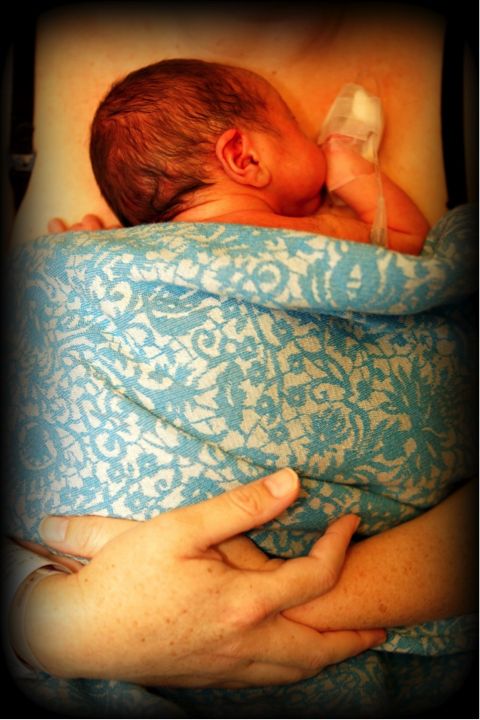 Innate immunity and human milk. J Nutr . 2005;135(5):1308-1312. — Newburgh, D.S., "Natural Immunity and Breast Milk." F Int. 2005;135(5):1308-1312.
Innate immunity and human milk. J Nutr . 2005;135(5):1308-1312. — Newburgh, D.S., "Natural Immunity and Breast Milk." F Int. 2005;135(5):1308-1312.
9 Patel AL et al. Impact of early human milk on sepsis and health-care costs in very low birth weight infants. J Perinatol . 2013;33(7):514-519.- Patel A.L. et al., "Impact of early breast milk on sepsis and health care costs in extremely low birth weight infants". Zh Perinatol (Journal of Perinatology). 2013;33(7):514-519.
10 Zhou J et al . Human milk feeding as a protective factor for retinopathy of prematurity: a meta-analysis. Pediatrics. 2015;136(6): e 1576-1586. - Zhou Q. et al., "Breastfeeding as a protective factor against retinopathy of prematurity: a meta-analysis. " Pediatrix (Pediatrics). 2015;136(6):e1576-1586.
" Pediatrix (Pediatrics). 2015;136(6):e1576-1586.
11 Patel AL et al. Influence of own mother's milk on bronchopulmonary dysplasia and costs. Arch DIS Child Neonat ED . 2017;102(3): F 256- F 261. - Patel A.L. et al., "Effect of breast milk on bronchopulmonary dysplasia and health care costs." Arch Dis Child Fetal Neonate Ed. 2017;102(3): F 256- F 261. 12 MEIER PP ET AL AL AL AL . Improving the use of human milk during and after the NICU stay. Clin Perinatol. 2010;37(1):217-245. - Meyer P.P. et al., "Optimizing the use of breast milk during and after a stay in the neonatal intensive care unit." Perinatol wedge. 13 Lucas A, Cole TJ. Breast milk and neonatal necrotising enterocolitis. Lancet. 1990;336(8730-8731):1519-1523. — Lucas A, Cole TJ, "Breast milk and neonatal necrotizing enterocolitis." Lancet 1990;336(8730-8731):1519-1523. 14 Schanler RJ et al. Randomized trial of donor human milk versus preterm formula as substitutes for mothers' own milk in the feeding of extremely premature infants. Pediatrics. 2005;116(2):400-406. - Chanler R.J. et al., "Randomized Trial of Donor Human Milk Versus Prematurity Formula as a Breast Milk Substitute in Severely Preterm Infants". Pediatrix (Pediatrics). 2005;116(2):400-406. 15 Vohr BR et al. Beneficial effects of breast milk in the neonatal intensive care unit on the developmental outcome of extremely low birth weight infants at 18 months of age. Pediatrics. 16 Victora CG et al. Breastfeeding in the 21st century: epidemiology, mechanisms, and lifelong effect. Lancet. 2016;387(10017):475-490. - Victor S.J. et al., "Breastfeeding in the 21st century: epidemiology, mechanisms and long-term effects". Lancet (Lancet). 2016;387(10017):475-490. 17 Lewandowski AJ et al. Breast milk consumption in preterm neonates and cardiac shape in adulthood. Pediatrics. 2016;138(1): pii : e 20160050. - Lewandowski, A.J. et al., "Breastfeeding in preterm infants and cardiovascular health in adulthood." Pediatrix (Pediatrics). 2016;138(1):pii:e20160050. 18 Meier PP et al. Which breast pump for which mother: an evidence-based approach to individualizing breast pump technology. J. Perinatol. 2016;36(7):493-499. - Meyer P.P. et al., Breastpump Selection: A Scientific Approach to Customizing Pumping Technology. J Perinatol (Journal of Perinatology). 2016;36(7):493-499. 19 Parker LA et al. Effect of early breast milk expression on milk volume and timing of lactogenesis stage II among mothers of very low birth weight infants: a pilot study. J Perinatol. 2012;32(3):205-209. - Parker L.A. et al., "Effect of early pumping on milk supply and timing of the second stage of lactogenesis in mothers of extremely low birth weight infants: a pilot study." J Perinatol (Journal of Perinatology). 2012;32(3):205-209. 20 Meier PP et al. Breast pump suction patterns that mimic the human infant during breastfeeding: greater milk output in less time spent pumping for breast pump-dependent mothers with premature infants. 21 Parker LA et al. Association of timing of initiation of breastmilk expression on milk volume and timing of lactogenesis stage II among mothers of very low-birth-weight infants. Breastfeed Med . 2015;10(2):84-91. - Parker L.A. et al., "Effect of early pumping on milk supply and timing of the second stage of lactogenesis in mothers of extremely low birth weight infants: a pilot study." Brestfeed Med (Breastfeeding Medicine). 2015;10(2):84-91. 22 Lee J et al. Oropharyngeal colostrum administration in extremely premature infants: an RCT. Pediatrics. 2015;135(2): e 357-366. 23 Prime PK et al. Simultaneous breast expression in breastfeeding women is more efficacious than sequential breast expression. Breastfeed Med 2012; 7(6):442–447. - Prime D.K. and co-authors. "During the period of breastfeeding, simultaneous pumping of both breasts is more productive than sequential pumping." Brestfeed Med (Breastfeeding Medicine). 2012;7(6):442-447. 24 Uvn ä s Moberg K Oxytocin effects in mothers and infants during breastfeeding. Infant 2013; 9(6):201–206. - Uvenas-Moberg K, Prime DK, "Oxytocin effects on mother and child during breastfeeding". Infant. 2013;9(6):201-206. 25 Boundy EO et al. 26 Acuña-Muga J et al. Volume of milk obtained in relation to location and circumstances of expression in mothers of very low birth weight infants. J Hum Lact . 2014;30(1):41-46 - Akunya-Muga, J. et al., "The amount of milk expressed by location and circumstances of pumping in mothers of extremely low birth weight infants." F Hum Lakt. 2014;30(1):41-46 27 Nyqvist KH et al. Towards universal kangaroo mother care: recommendations and report from the first European conference and seventh international workshop on kangaroo mother care. Acta Paediatr . 28 American Academy of Pediatrics - Section on Breastfeeding. Breastfeeding and the use of human milk. Pediatrics . 2012;129(3): e 827-841.- American Academy of Pediatrics - Section "Breastfeeding", "Breastfeeding and the use of breast milk". Pediatrix (Pediatrics). 2012;129(3): e 827-841. *RC No. ФСЗ 2010/06525 dated 17/03/2021 %PDF-1.5 % 10 obj >/OCGs[14 0 R]>>/Pages 3 0 R/Type/Catalog>> endobj 20 obj >stream application/pdf (Clinical perinatology). 2010;37(1):217-245.
(Clinical perinatology). 2010;37(1):217-245.  2006;118(1): e 115-123. - Thief B.R. et al., Developmental Beneficial Effects of Breast Milk in the Intensive Care Unit on Extremely Low Birth Weight Infants by 18 Months of Age. Pediatrix (Pediatrics). 2006;118(1):e115-123.
2006;118(1): e 115-123. - Thief B.R. et al., Developmental Beneficial Effects of Breast Milk in the Intensive Care Unit on Extremely Low Birth Weight Infants by 18 Months of Age. Pediatrix (Pediatrics). 2006;118(1):e115-123. 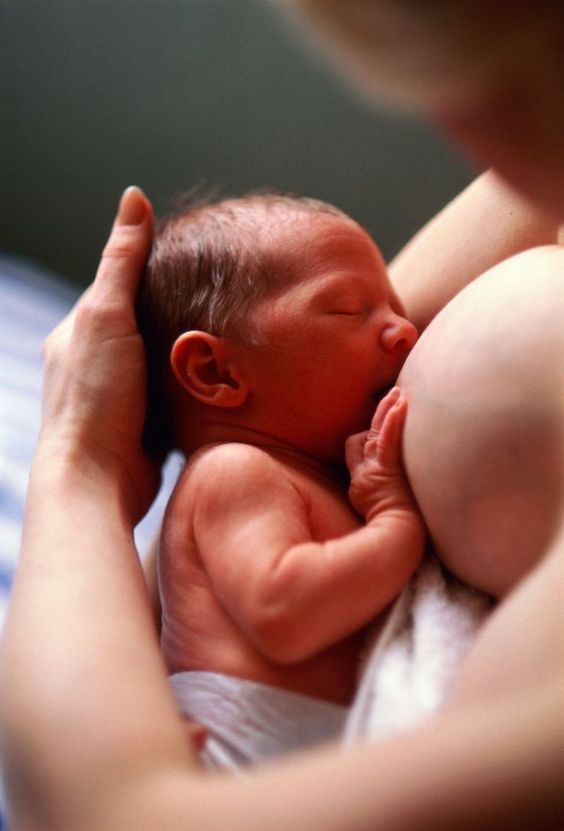
 J Perinatol. 2012;32(2):103-110. - Meyer P.P. et al., "Pumping patterns that mimic breastfeeding behavior: more milk and less time for constantly pumping mothers of preterm infants." J Perinatol (Journal of Perinatology). 2012;32(2):103-110.
J Perinatol. 2012;32(2):103-110. - Meyer P.P. et al., "Pumping patterns that mimic breastfeeding behavior: more milk and less time for constantly pumping mothers of preterm infants." J Perinatol (Journal of Perinatology). 2012;32(2):103-110.  - Lee J. et al., "Oropharyngeal colostrum ingestion in very preterm infants: a randomized controlled clinical trial." Pediatrix (Pediatrics). 2015;135(2):e357-366.
- Lee J. et al., "Oropharyngeal colostrum ingestion in very preterm infants: a randomized controlled clinical trial." Pediatrix (Pediatrics). 2015;135(2):e357-366.  Kangaroo mother care and neonatal outcomes: a meta-analysis. Pediatrics. 2015;137(1): e 20152238. - Boundi I.O. and co-authors, "The Kangaroo Method and Its Impact on Newborns: A Meta-Analysis". Pediatrix (Pediatrics). 2015;137(1): e20152238.
Kangaroo mother care and neonatal outcomes: a meta-analysis. Pediatrics. 2015;137(1): e 20152238. - Boundi I.O. and co-authors, "The Kangaroo Method and Its Impact on Newborns: A Meta-Analysis". Pediatrix (Pediatrics). 2015;137(1): e20152238.  2010;99(6):820-826.- Nukvist K.H. et al., "On the Universality of the Kangaroo Method: Recommendations and Report from the First European Conference and the Seventh International Kangaroo Method Workshop". Akta Pediatr. 2010;99(6):820-826.
2010;99(6):820-826.- Nukvist K.H. et al., "On the Universality of the Kangaroo Method: Recommendations and Report from the First European Conference and the Seventh International Kangaroo Method Workshop". Akta Pediatr. 2010;99(6):820-826. Read instructions before use. Consult a specialist about possible contraindications.
power supply
 0 (Windows)
0 (Windows)  did:1e78dbf1-03f3-7246-846b-aa029f6efd31uuid:5D20892493BFDB11914A8590D31508C8proof:pdfxmp.iid:3d8e54f0-3bfc-4245-9150-047bf0c8e023xmp.did:3d8e54f0-3bfc-4245-9150- 047bf0c8e023uuid:5D20892493BFDB11914A8590D31508C8proof:pdf
did:1e78dbf1-03f3-7246-846b-aa029f6efd31uuid:5D20892493BFDB11914A8590D31508C8proof:pdfxmp.iid:3d8e54f0-3bfc-4245-9150-047bf0c8e023xmp.did:3d8e54f0-3bfc-4245-9150- 047bf0c8e023uuid:5D20892493BFDB11914A8590D31508C8proof:pdf  jpgxmp.did:f6c9fdc7-d444-9548-bf4f-3806865f965exmp.iid:f6c9fdc7-d444-9548-bf4f-3806865f965e
jpgxmp.did:f6c9fdc7-d444-9548-bf4f-3806865f965exmp.iid:f6c9fdc7-d444-9548-bf4f-3806865f965e  iid:f6c9fdc7-d444-9548-bf4f-3806865f965e
iid:f6c9fdc7-d444-9548-bf4f-3806865f965e  jpgxmp.did:f6c9fdc7-d444-9548-bf4f-3806865f965exmp.iid:f6c9fdc7-d444-9548-bf4f-3806865f965e
jpgxmp.did:f6c9fdc7-d444-9548-bf4f-3806865f965exmp.iid:f6c9fdc7-d444-9548-bf4f-3806865f965e 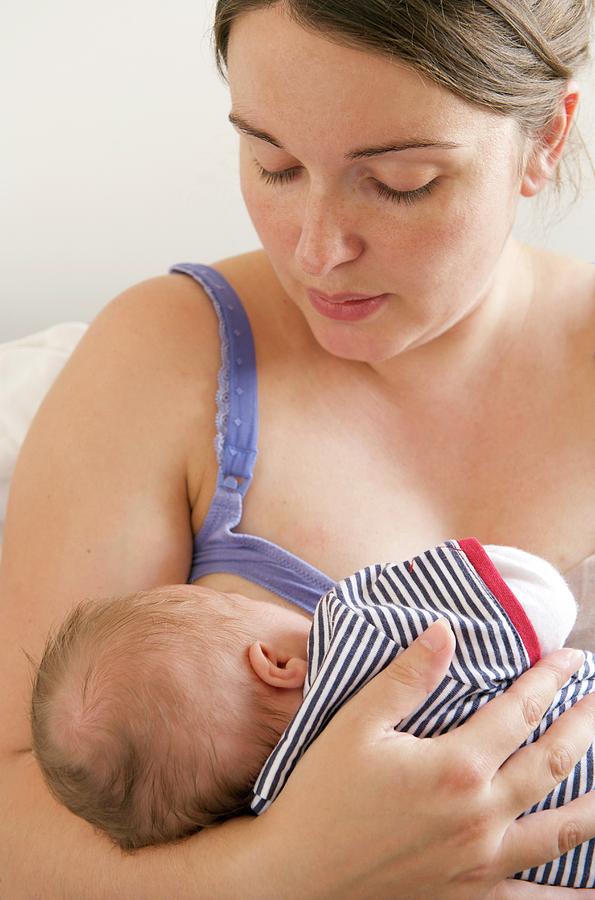 jpgxmp.did:f6c9fdc7-d444-9548-bf4f-3806865f965exmp.iid:f6c9fdc7-d444-9548-bf4f-3806865f965e
jpgxmp.did:f6c9fdc7-d444-9548-bf4f-3806865f965exmp.iid:f6c9fdc7-d444-9548-bf4f-3806865f965e 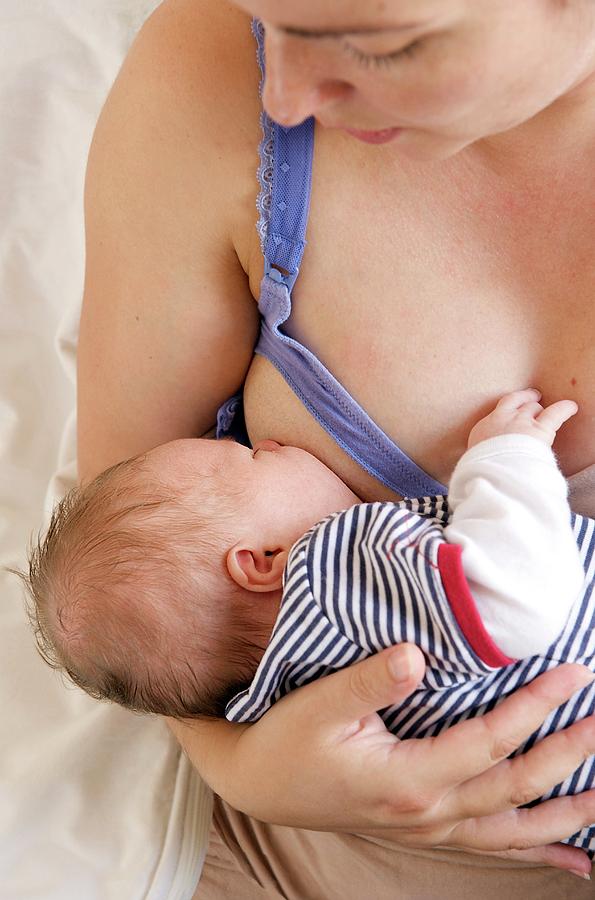 00 endstream endobj 3 0 obj > endobj 16 0 obj > endobj 17 0 obj > endobj 10 0 obj >/Resources>/ProcSet[/PDF/ImageC]/Properties>/XObject>>>/Thumb 25 0 R/TrimBox[0.
00 endstream endobj 3 0 obj > endobj 16 0 obj > endobj 17 0 obj > endobj 10 0 obj >/Resources>/ProcSet[/PDF/ImageC]/Properties>/XObject>>>/Thumb 25 0 R/TrimBox[0.



